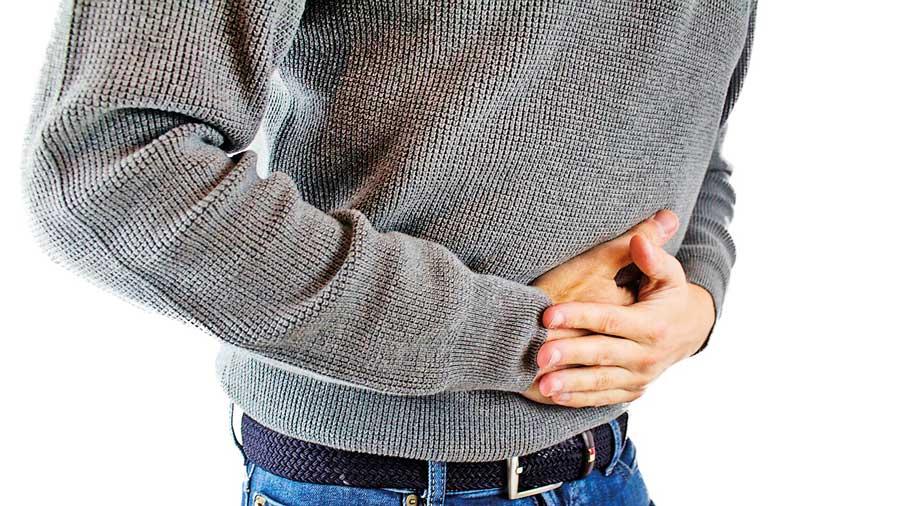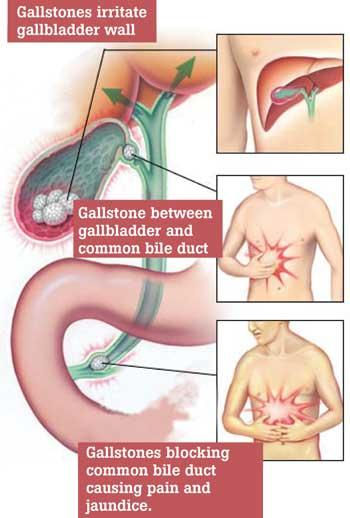Reply To:
Name - Reply Comment

 A considerable number of patients get their gallbladder removed, due to stones every year. A commonly asked question is “how do these stones form and where do they come from?”
A considerable number of patients get their gallbladder removed, due to stones every year. A commonly asked question is “how do these stones form and where do they come from?”
As far as the aetiology is concerned, there can be certain similarities between the patients who develop gallstones, but the exact reason for its formation is usually not found. It is quite evident that it’s time for your gallbladder to be taken out of the body, once it starts giving rise to symptoms.
To discuss more on the gritty reality behind gallstones, we had a discussion with Dr. Chinthaka Wijesurendere, Consultant General Surgeon with special interest in colorectal surgery.
“Your gallbladder is a pear-shaped organ under your liver. It stores bile, a fluid made by your liver to digest fat. As your stomach and intestines digest food, your gallbladder releases bile through a tube called the common bile duct which connects your gallbladder and liver to your small intestine. Gallstones form when substances in bile get hardened” says Dr. Wijesurendere.
As far as the incidence is concerned, approximately up to 20% of adults may have gallstones, yet only 1%-3% develop symptoms. So it’s always better to keep an eye on the possible ways of presentation, so that you can get medical advice without waiting until the last moment.
The aetiology isn’t fully understood
It is believed that gallstones form when there is an imbalance of the substances that form bile. Although, the reasons behind the imbalances are not fully understood, here are some of the risk groups that develop gallstones.
The presentation can vary
“As gallstones move into the outlet of the gallbladder (Cystic duct) and create blockage, pressure increases in the gallbladder and one or more symptoms may occur. Gallbladder attacks often follow fatty meals and they may occur during the night,” underscores Dr. Wijesurendere.
A typical attack can cause,
Although these attacks often pass as gallstones move, your gallbladder can still get infected, swollen and ruptured if a blockage remains, which can result in serious consequences.
Therefore, it is advisable to seek medical attention sooner if any of the following symptoms are present as they may indicate more severe disease.
“Furthermore, stones can migrate out of the gall bladder and get lodged in the bile duct which can produce a range of more severe manifestations such as jaundice, life threatening infection of the biliary tree (Cholangitis) or acute pancreatitis.
It is also important to know that, many people with gallstones (in the gallbladder) may have no symptoms; which is then called ‘silent stones’ and do not need treatment” he further explained.
The following illustrates how stones can cause problems
Diagnosis of gallstones
“When gallstones are suspected to be the cause of symptoms, the doctor is likely to do an ultrasound scan—the most sensitive and specific test for gallstones,” the doctor said.
Blood tests may be performed to look for signs of infection, obstruction to bile flow, pancreatitis, or jaundice.
Dr. Wijesurendere underscores that these symptoms of gallstones may mimic those of a heart attack, appendicitis, peptic ulcers, irritable bowel syndrome, hepatitis and therefore an accurate diagnosis is important.

Can gallstones pass down on their own?
They can pass into the small bowel. But removal of the gallbladder is essential because the remaining stones in the gallbladder will pass down later and cause trouble again.
Getting gallstones dissolved isn’t an option
“Gallstones are not usually treated by dissolution therapy because it is rarely successful because the gallbladder can form stones again. Therefore, removal of the gallbladder is the preferred treatment,” he said.
The place for surgery
“If you have gallstones without symptoms, you do not require treatment. But, if you are having frequent gallbladder attacks, your surgeon would likely recommend you have your gallbladder removed—an operation called a cholecystectomy,” mentions the doctor.
Nearly all cholecystectomies are performed with laparoscopy (Keyhole operation)
“After a general anaesthesia, the surgeon makes several tiny incisions in the abdomen and inserts a miniature video camera. The camera sends a magnified image from inside the body to a video monitor, giving the surgeon a close-up view of the organs and tissues. While watching the monitor, the surgeon uses the instruments to carefully separate the gallbladder from the liver, bile ducts, and other structures. Sometimes it is done with an open operation.
If gallstones are present in the bile ducts your specialist would use ERCP to locate and remove them before or after gallbladder surgery. Occasionally, a person who has had a cholecystectomy is diagnosed with a gallstone in the bile ducts weeks, months, or even years after the surgery. The ERCP procedure is usually successful in removing the stones in these cases,” he adds.
Recovery after surgery
“Recovery after laparoscopic surgery usually involves only one night in the hospital. Normal activity can be resumed after a few days at home. Because the abdominal muscles are not cut during laparoscopic surgery, patients have less pain and faster recovery than after “open” surgery, which requires a 5- to 8-inch incision across the abdomen,” explains the doctor.
We can live without the Gallbladder
Your liver is capable of producing enough bile in order to digest a normal diet. Once the gallbladder is removed, bile flows directly into the small intestine, instead of being stored in the gallbladder. Because now the bile flows into the small intestine more often, softer and more frequent stools can occur in about 1 percent of people. These changes are usually temporary and you would be able to return to your normal routine in no time.
Take home message